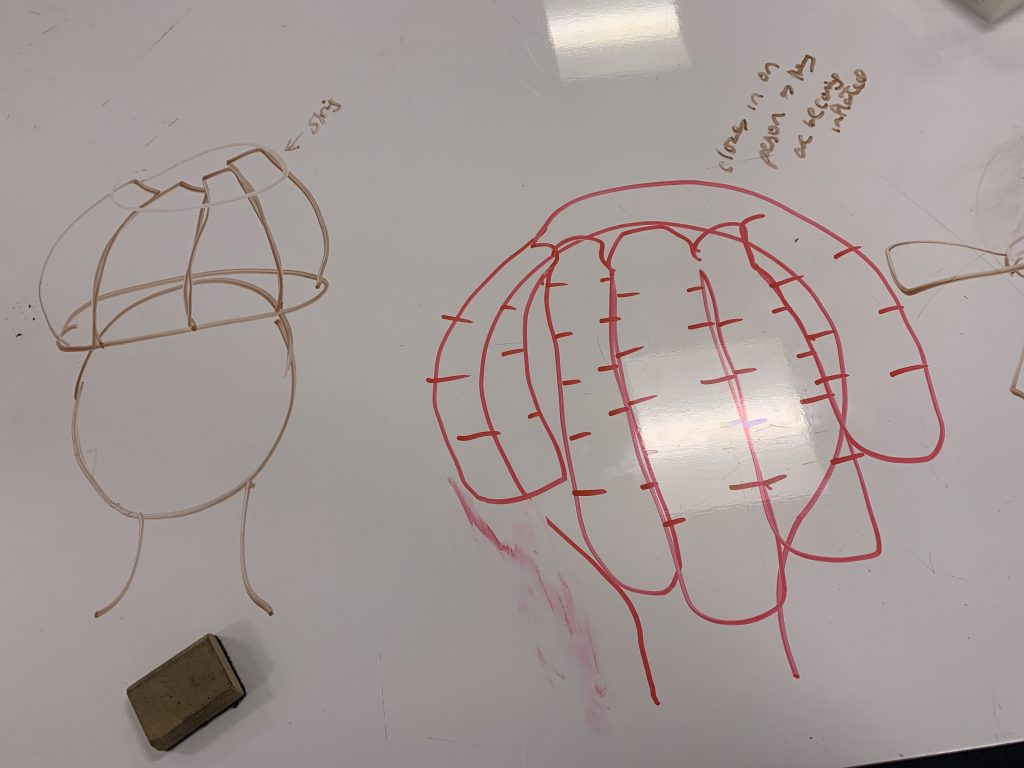For this project, we wanted to create a piece that looked alive and had a parasitic nature that caused it to enclose around the host’s face. This video illustrates the final terrifying moments as the parasite is encircling the host, ready to devour its prey: in other words, it is slowly becoming detrimental to the host. It comes alive through air being pumped in through the tubes. The host would be aware of the parasite but think it to be benign, seeing it as some sort of decorative piece on their body. Only when the “creature” came alive and started to close in on them would they realize its true parasitic nature.
Initially, we took inspiration from hands and fingers and the petals of flowers. At the start, we tried creating a crown, with long, inflatable petals that would close down over the face, but then we decided on a more hand-like structure that would have a palm attached to a collar around the neck, and fingers reaching up over the face.

However, upon constructing this hand-collar, we found it was too complex for one pneumatic valve and was full of leaks because of all the seams. So, we cut all the fingers off, re-sealed them, and decided to attach them to a neck collar made of tubing and gave each of the five fingers its own pneumonic valve. This was much more successful, and being able to control the fingers individually really made the inflatable look like an animated octopus or venus flytrap encasing a victim as it comes to life. To create a more dramatic movement, we made a headband with elastic that attached to the fingers with strings so that when the host raises their head slightly, the creature encloses even more around their face. With the addition of hinges using the heat press, we really liked how the final parasite was able to close its fingers around the face in a dynamic way.
Since we both had no experience with pneumatics, dividing up the work based on skill wasn’t really necessary and we were equally experimental in everything we did. We took lots of time to just experiment using the plastics and the heat press, and were able to work out what structures worked best for pneumatics by experimenting, and sharing ideas.
Leave a Reply
You must be logged in to post a comment.